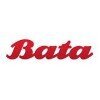Filter interviews by
Any wear Computer Typist Interview Questions and Answers
Any wear Computer Typist Interview Experiences
1 interview found
I applied via AmbitionBox and was interviewed in Jul 2024. There were 6 interview rounds.
Here are some details about a coding test:
*Coding Test Format:*
- Online assessment platform (e.g., HackerRank, LeetCode, CodePen)
- Timed test (e.g., 60-90 minutes)
- Series of coding challenges or problems
- Multiple programming languages to choose from (e.g., Python, Java, JavaScript)
*Coding Test Content:*
- Data structures and algorithms (e.g., arrays, linked lists, sorting, searching)
- Object-Oriented Programming (OOP) concepts (e.g., inheritance, polymorphism, encapsulation)
- Functional programming concepts (e.g., lambda functions, closures, recursion)
- System design and architecture (e.g., scalability, performance, reliability)
- Code quality and best practices (e.g., readability, maintainability, testing)
*Coding Test Tips:*
- Practice coding challenges regularly
- Review data structures and algorithms
- Familiarize yourself with the testing platform
- Read the problem statements carefully
- Write clean, readable, and efficient code
- Test your code thoroughly
*Common Coding Test Platforms:*
- HackerRank
- LeetCode
- CodePen
- CodeWars
- CodinGame
- Pramp
Remember, the specific details of the coding test may vary depending on the company or role. Be prepared to adapt and showcase your coding skills!
Here are more detailed insights into a coding test:
_Coding Test Structure:_
1. _Introduction_: Overview of the test, instructions, and timeline.
2. _Warm-up Exercise_: A simple coding challenge to familiarize yourself with the platform.
3. _Main Coding Challenges_: A series of problems, each with a unique requirement, constraint, or objective.
4. _Bonus Questions_: Optional, additional challenges for extra points or to demonstrate expertise.
5. _Conclusion_: Final submission, review, and feedback.
_Coding Test Evaluation Criteria:_
1. _Correctness_: Does the code produce the expected output?
2. _Efficiency_: Is the code optimized for performance, memory usage, and scalability?
3. _Code Quality_: Is the code readable, maintainable, and following best practices?
4. _Testing_: Are there sufficient unit tests, integration tests, or edge cases covered?
5. _Documentation_: Is the code well-commented, with clear explanations and instructions?
_Coding Test Tips and Strategies:_
1. _Read carefully_: Understand the problem statement, constraints, and requirements.
2. _Plan ahead_: Break down complex problems into manageable components.
3. _Write clean code_: Focus on readability, modularity, and reusability.
4. _Test thoroughly_: Ensure your code works correctly, handles edge cases, and is efficient.
5. _Practice regularly_: Familiarize yourself with common data structures, algorithms, and coding challenges.
_Common Coding Test Challenges:_
1. _Data Structures_: Arrays, linked lists, stacks, queues, trees, graphs.
2. _Algorithms_: Sorting, searching, recursion, dynamic programming, greedy algorithms.
3. _Object-Oriented Programming_: Inheritance, polymorphism, encapsulation, abstraction.
4. _Functional Programming_: Lambda functions, closures, higher-order functions, immutability.
5. _System Design_: Scalability, performance, reliability, security, architecture.
Remember, the specific details of the coding test may vary depending on the company or role. Stay calm, focused, and showcase your coding skills!
Here are even more detailed insights into a coding test:
_Coding Test Format:_
- Online proctored test
- Timed test (60-120 minutes)
- 2-5 coding challenges
- Choice of programming languages (e.g., Python, Java, C++, JavaScript)
- Real-world scenarios or hypothetical problems
_Coding Test Content:_
- Data structures and algorithms (40-50%)
- Object-Oriented Programming (OOP) concepts (20-30%)
- Functional programming concepts (10-20%)
- System design and architecture (10-20%)
- Code quality, testing, and debugging (10-20%)
_Coding Test Evaluation Criteria:_
- Correctness (40%)
- Efficiency and optimization (20%)
- Code quality, readability, and maintainability (20%)
- Testing and debugging (10%)
- System design and architecture (10%)
_Coding Test Tips and Strategies:_
- Practice coding challenges regularly
- Review data structures, algorithms, and OOP concepts
- Familiarize yourself with the testing platform
- Read problem statements carefully
- Plan ahead, break down complex problems
- Write clean, readable, and efficient code
- Test thoroughly, including edge cases
_Common Coding Test Platforms:_
- HackerRank
- LeetCode
- CodePen
- CodeWars
- CodinGame
- Pramp
- HireVue
- CodeFights
_Coding Test Preparation Resources:_
- Online courses (e.g., Coursera, Udemy, edX)
- Coding challenge websites (e.g., HackerRank, LeetCode)
- Books and textbooks (e.g., "Cracking the Coding Interview")
- Practice with a coding buddy or mentor
- Review system design and architecture concepts
Remember, the specific details of the coding test may vary depending on the company or role. Stay focused, and showcase your coding skills!
Here are even more detailed insights into a coding test:
_Coding Test Structure:_
1. Introduction (5 minutes)
2. Warm-up Exercise (10 minutes)
3. Main Coding Challenges (60-90 minutes)
- Challenge 1: Data Structures and Algorithms (20 points)
- Challenge 2: Object-Oriented Programming (30 points)
- Challenge 3: System Design and Architecture (50 points)
4. Bonus Questions (30 minutes)
5. Conclusion and Submission (10 minutes)
_Coding Test Environment:_
- Online proctored test
- Choice of programming languages (Python, Java, C++, JavaScript)
- Real-time coding editor with syntax highlighting and auto-completion
- Access to documentation and resources (e.g., MDN Web Docs, Java API)
_Coding Test Evaluation Criteria:_
1. Correctness (40%)
2. Efficiency and Optimization (25%)
3. Code Quality, Readability, and Maintainability (20%)
4. Testing and Debugging (10%)
5. System Design and Architecture (5%)
_Coding Test Tips and Strategies:_
1. Practice coding challenges regularly
2. Review data structures, algorithms, and OOP concepts
3. Familiarize yourself with the testing platform
4. Read problem statements carefully
5. Plan ahead, break down complex problems
6. Write clean, readable, and efficient code
7. Test thoroughly, including edge cases
_Common Coding Test Challenges:_
1. Data Structures: Arrays, Linked Lists, Stacks, Queues, Trees, Graphs
2. Algorithms: Sorting, Searching, Recursion, Dynamic Programming, Greedy Algorithms
3. Object-Oriented Programming: Inheritance, Polymorphism, Encapsulation, Abstraction
4. System Design and Architecture: Scalability, Performance, Reliability, Security
Remember, the specific details of the coding test may vary depending on the company or role. Stay focused, and showcase your coding skills!
Here are the details of the assignment:
*Assignment:* Build a Web Scraper using Python
*Objective:*
- Extract data from a given website
- Store the data in a structured format (e.g., CSV, JSON)
- Handle common web scraping challenges (e.g., pagination, JavaScript rendering)
*Requirements:*
1. Choose a website with publicly available data (e.g., news articles, product information)
2. Inspect the website's HTML structure and identify the data to be extracted
3. Write a Python script using a web scraping library (e.g., Beautiful Soup, Scrapy)
4. Handle pagination and extract data from multiple pages (if applicable)
5. Store the extracted data in a CSV or JSON file
6. Include error handling and logging mechanisms
7. Write a brief report explaining your approach and challenges faced
*Evaluation Criteria:*
1. Correctness and completeness of the extracted data
2. Code quality, readability, and maintainability
3. Handling of web scraping challenges (e.g., pagination, JavaScript rendering)
4. Error handling and logging mechanisms
5. Report clarity and thoroughness
*Resources:*
- Python documentation
- Web scraping library documentation (e.g., Beautiful Soup, Scrapy)
- Online tutorials and guides
*Submission:*
- Python script (.py file)
- Extracted data file (CSV or JSON)
- Brief report (.pdf or .docx file)
Note: The specific details of the assignment may vary depending on the course or instructor. Be sure to check with your instructor for any additional requirements or clarification.
Here are the details of the case study:
_Case Study:_ Improving Customer Experience at XYZ Corporation
_Background:_
- XYZ Corporation is a leading e-commerce company
- Customer complaints about website navigation and search functionality
- High bounce rates and low conversion rates
_Objective:_
- Analyze the current website and identify areas for improvement
- Develop recommendations to enhance customer experience
- Implement and measure the effectiveness of the improvements
_Requirements:_
1. Conduct user research (surveys, interviews, usability testing)
2. Analyze website analytics (Google Analytics, heat maps, click-through rates)
3. Identify areas for improvement (navigation, search functionality, content organization)
4. Develop wireframes and prototypes for proposed changes
5. Conduct A/B testing to measure the effectiveness of the improvements
6. Write a comprehensive report detailing findings and recommendations
_Evaluation Criteria:_
1. Depth and accuracy of user research and analysis
2. Quality and feasibility of recommended improvements
3. Effectiveness of implemented changes (measured by A/B testing)
4. Clarity and thoroughness of the report
_Resources:_
- User research methods and tools (e.g., SurveyMonkey, UserTesting)
- Web analytics tools (e.g., Google Analytics, Hotjar)
- Wireframing and prototyping tools (e.g., Sketch, Figma)
- A/B testing tools (e.g., Optimizely, VWO)
_Submission:_
- Comprehensive report (.pdf or .docx file)
- Wireframes and prototypes (.pdf or .sketch file)
- A/B testing results and analysis (.pdf or .xlsx file)
Note: The specific details of the case study may vary depending on the course or instructor. Be sure to check with your instructor for any additional requirements or clarification.
Interview Preparation Tips
- Based on common interview experi
- Typing Speed
- Marathi Typing
- ASP.Net
*Resume and Cover Letter:*
1. Tailor your resume and cover letter to each job application.
2. Highlight your achievements and skills relevant to the job.
3. Use clear and concise language.
4. Proofread multiple times for errors.
*Job Search:*
1. Utilize online job boards and company websites.
2. Network with professionals in your industry.
3. Attend job fairs and networking events.
4. Consider working with recruiters.
*Interviews:*
1. Research the company and position thoroughly.
2. Practice answering common interview questions.
3. Show enthusiasm and interest in the company.
4. Ask thoughtful questions during the interview.
*Skills Development:*
1. Identify areas for improvement and take courses or attend workshops.
2. Stay up-to-date with industry trends and news.
3. Develop transferable skills (e.g., communication, teamwork).
4. Showcase your skills on your resume and online profiles.
*Networking:*
1. Build a strong LinkedIn profile.
2. Connect with professionals in your industry.
3. Attend networking events and join professional organizations.
4. Volunteer to expand your network.
*Job Application Follow-up:*
1. Send a thank-you note or email after the interview.
2. Follow up with the employer if you haven't heard back.
3. Be patient and persistent.
Remember, finding a job takes time and effort. Stay positive, and don't give up!
Top trending discussions






Interview questions from similar companies

I appeared for an interview in Nov 2020.
Interview Questionnaire
2 Questions
- Q1. How the job will be online?
- Q2. How the shift matter's?
Interview Preparation Tips

Artificial intelligence

I applied via Referral and was interviewed in Dec 2022. There were 4 interview rounds.

(1 Question)
- Q1. SQL basics and coding questions
(1 Question)
- Q1. Data Science mathematical concepts
(1 Question)
- Q1. Why do you want to join
Interview Preparation Tips

Cas study on books library data
(1 Question)
- Q1. Basics of spark Discussion on case study approach SQL question on windows function
Interview Preparation Tips

I applied via LinkedIn and was interviewed before Jan 2020. There were 4 interview rounds.
Interview Questionnaire
3 Questions
- Q1. About my current job roles and my approach
- Q2. Job function
- Q3. My reporting and hierarchy
Interview Preparation Tips

I applied via Naukri.com and was interviewed before May 2022. There were 3 interview rounds.

(2 Questions)
- Q1. Market released question & about company
- Q2. Known state&other cities work
- Ans.
I have experience working with state and other cities.
Collaborated with state officials to implement a new recycling program
Participated in regional meetings to discuss transportation initiatives
Coordinated with neighboring cities to share resources during emergencies
Market related , mathmatics questions
Interview Preparation Tips

I applied via Referral and was interviewed in May 2021. There were 4 interview rounds.
Interview Questionnaire
3 Questions
- Q1. Gst questions
- Q2. Tds sections
- Q3. Accounting entries
Interview Preparation Tips

I applied via Referral and was interviewed in May 2021. There was 1 interview round.
Interview Questionnaire
3 Questions
- Q1. Profile / Roles I have performed.
- Ans.
Experienced manager with a strong background in team leadership, project management, and strategic planning across various industries.
Led a team of 15 in a software development project, improving delivery time by 30%.
Implemented a new performance management system that increased employee engagement scores by 25%.
Managed a budget of $2 million for a marketing campaign that resulted in a 40% increase in sales.
Facilitated...
- Q2. Profile / Roles I have performed.
- Ans.
I have held various roles including team leader, project manager, and operations supervisor, focusing on team development and project success.
Led a team of 10 in a successful product launch, achieving a 20% increase in market share.
Managed cross-functional projects, coordinating between marketing, sales, and development teams.
Implemented performance metrics that improved team productivity by 15% over six months.
Conduct...
- Q3. Profile / Roles I have performed.
- Ans.
I have performed various roles including team leadership, project management, and strategic planning across multiple industries.
Led a team of 10 in a successful product launch, increasing sales by 30% within the first quarter.
Managed cross-functional projects, ensuring timely delivery and adherence to budget constraints.
Developed strategic plans that aligned with company goals, resulting in a 15% increase in operationa...
Interview Preparation Tips

(1 Question)
- Q1. Why you want to join
- Ans.
I am passionate about leading teams and driving results in a dynamic work environment.
I have a proven track record of successfully managing teams and achieving goals.
I am excited about the opportunity to contribute my skills and experience to your organization.
I am drawn to the challenges and opportunities for growth that this position offers.
Any wear Interview FAQs
Tell us how to improve this page.
Any wear Interviews By Designations
- Any wear Tele Caller Interview Questions
- Any wear HR Executive Interview Questions
- Any wear Accountant Interview Questions
- Any wear Medical Representative Interview Questions
- Any wear Data Analyst Interview Questions
- Any wear Financial Analyst Interview Questions
- Any wear Java Developer Interview Questions
- Any wear Computer Typist Interview Questions
- Show more
Interview Questions for Popular Designations
Overall Interview Experience Rating
based on 1 interview experience
Difficulty level
Duration
Interview Questions from Similar Companies
Any wear Computer Typist Reviews and Ratings
based on 1 review
Rating in categories
|
Driver
11
salaries
| ₹1.8 L/yr - ₹4 L/yr |
|
Computer Operator
7
salaries
| ₹0.8 L/yr - ₹4.5 L/yr |
|
Accountant
6
salaries
| ₹1 L/yr - ₹2.9 L/yr |
|
Data Analyst
6
salaries
| ₹1 L/yr - ₹4 L/yr |
|
Computer Typist
6
salaries
| ₹1.5 L/yr - ₹4.5 L/yr |

Aditya Birla Fashion and Retail

Shahi Exports

Trident Group

Bata
- Home >
- Interviews >
- Any wear Interview Questions








